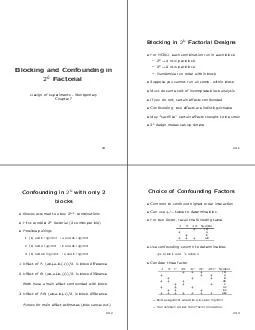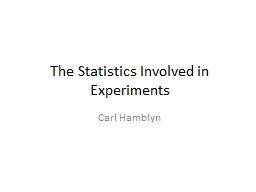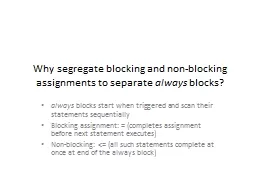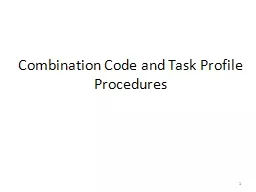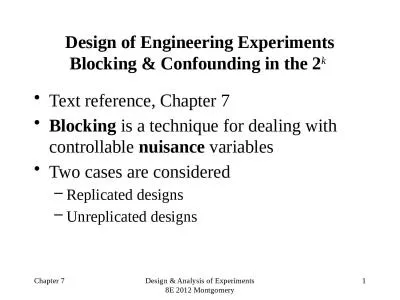PDF-Blocking and Confounding in Factorial Design of Experiments Montgomery Chapter Blocking
Author : kittie-lecroy | Published Date : 2015-03-09
within block Must do some sort of incomplete block analysis If you do not certain eects confounded Confounding two eects are indistinguishable May sacrice certain
Presentation Embed Code
Download Presentation
Download Presentation The PPT/PDF document "Blocking and Confounding in Factorial De..." is the property of its rightful owner. Permission is granted to download and print the materials on this website for personal, non-commercial use only, and to display it on your personal computer provided you do not modify the materials and that you retain all copyright notices contained in the materials. By downloading content from our website, you accept the terms of this agreement.
Blocking and Confounding in Factorial Design of Experiments Montgomery Chapter Blocking: Transcript
Download Rules Of Document
"Blocking and Confounding in Factorial Design of Experiments Montgomery Chapter Blocking"The content belongs to its owner. You may download and print it for personal use, without modification, and keep all copyright notices. By downloading, you agree to these terms.
Related Documents

